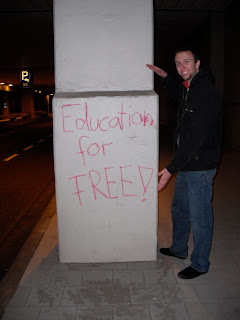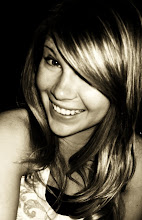Castle Church, Wittenberg
The castle church is most famous as the church where Dr. Martin Luther nailed his “95 Theses” to the door. Obviously a Catholic church at the time, it converted to Lutheran in 1525 shortly after the death of Frederick the Wise. Although Luther preached here on occasion, this was not his regular church – that was St. Mary’s just down the road. The remains of Luther, Melancthon, as well as Frederick the Wise are kept in the church. Melancthon, although differing in ideas at times with Luther, was his closest reformer. He died in 1560 and Luther died in 1546. Frederick the Wise was Luther’s ally who used his political prowess to keep Luther safe. Frederick also resided in the castle church and the church reflects the royal nature of its inhabitants – the dome appears to be crown-like. The church burned down in a fire but was rebuilt near the time of the civil war. The famous door is not the original, but was put up in the 19th century. Furnished with black bronze, the door is engraved with each of Luther’s 95 Theses. This church was also made the academic chapel of Wittenberg University in 1507. Personally, I expected this church to be larger than it was. Upon seeing it in person, I assumed that it was not the church that Luther nailed his theses to. Ideas that big I pictured being nailed to a door of equal enormity. Visiting the Castle Church in Wittenberg puts you right at the center of Reformation studies.
The Parish Church – St. Mary’s, Wittenberg
St. Mary’s church in Wittenberg is where Luther consistently preached and is also the oldest building in Wittenberg. The church was originally decorated in the Gothic style, but its spires were replaced by octagon-shaped towers. The inside of the church has many of Cranach’s paintings. Lucas Cranach was a German Renaissance painter and did many portraits of the protestant reformers of his day. We noticed that hanging above the altar is a painting by Cranach that also graces the cover of our Lindbergh text. The church was originally named St. Mary’s Church, but later became “the city church.” This church is the oldest piece of architecture in Wittenberg because it wasn’t destroyed in the war or under any other circumstance with sections dating back to the 13th century. Luther actually married his wife Katharina von Bora here in 1525 and all of his 6 children were baptized here as well. His original pulpit is no longer in the church but is instead held in one of his house museums. The church is still used today. Although this was originally a catholic church, the interior is drab and as plain as possible. When churches separated from Catholicism, they were stripped of all pomp and icons. I was surprised at how close the Castle Church is to the Parish Church as well as how similar in size they are. It gives me a new appreciation for Luther’s boldness. He didn’t just attack the Catholic church in town from afar, but instead attacked the Catholics who were literally right next door.
Luther’s Home, Wittenberg
Luther lived in this Augustinian monastery while he was a monk and also after he married Katie and had his children. I was surprised at how big it was. Something about Luther gave me a picture of a small and uncomfortable looking abode. Parts of this monastery, because it was dissolved during the Reformation, were turned into residence halls for students. The Luther house was home to around 35 to 50 people consistently… students, friends, family etc. Inside the museum, we got a chance to see paintings of Luther and Luther’s works inside his actual home. Also a random fact, monks are known for their breweries. Luther had his own in his basement and is quoted as saying “strong beer is the milk of the old!” More important than beer, Luther’s house has a book collection containing many first editions of Luther’s works. The museum also has a room dedicated to reformation art – most of the paintings are by Cranach. Here at the Luther house, we learned a lot about Katherina von Bora, Luther’s wife and heard rumors that Katie “ran the household.” Katie was educated because of her past as a nun, and therefore was able to participate in the theological table conversation right alongside Luther and his peers. Walking through the house we were able to see some of the rooms and what it would have looked like at one of these large dinners. For anyone even remotely interested in the history of evangelicalism or history in general, it will be a surreal to know that you are standing in the rooms that Luther developed his radical reforming ideas in.
Erfurt Augustinian Monastery
Erfurt is the home of the Augustinian monastery where Luther fulfilled his promise to St. Anne to become a monk. He joined in 1505 and left in 1511. Out of all the types of monks, the Augustinians are most well known for their severity. There are a few speculations on why Luther chose the Augustinians out of all the different cloisters to join. Personally, I think that because of Luther’s personality, he thought that if he was going to make a deal with God to become a monk, he needed to go all the way. Luther, as well as many other monks, thought that the harsher they treated themselves to be purged of worldly pleasures, the better guarantee there was for salvation. They worked the hardest, were extremely ascetic, and had the harshest living conditions and schedule. Upon taking the tour, I found out that morning prayers began at 2 in the morning, meals were twice a day, and most of the monk’s day was spent in silence. As harsh sounding as their lifestyle was, it was not reflected in the aesthetics of the monastery which was beautifully well preserved. The oldest section of the monastery dates back to the 13th century. Something else I was not aware of until visiting the monastery was that it specialized in a type of blue dye that our tour guide explained was similar to how blue jeans are made. Inside the church, we got to compare the appearance to that of the Castle Church and others like it. The monastery church was extremely cold and bare. The only decorations were stained glass windows, a few crosses, and some stone sculptures of monks from the cloister; a stark contrast from the Catholic churches of its day.
Wartburg Castle
While staying in Eisenach, Ambex had the privilege of visiting Wartburg Castle where Luther took refuge after the Diet of Worms in 1521. Frederic the Wise helped Luther escape because there was a plot to kill him on his way back to Wittenberg. Pope Leo X had excommunicated Luther after Luther’s famous words at the Diet “I cannot and will not recant. Here I stand, I can do no other!” In order to remain undetected, Luther hid under the auspice of “Knight George.” Luther stayed here for one year. It was here that Luther translated the Greek New Testament into German, which only took him a matter of months! The Luther room has a story behind it. It is said that while Luther was translating the Bible one night, he apparently saw a demon in bishops clothing and threw an ink well at it. I could have missed it, but I didn’t notice any ink stains still there. The actual castle is from the feudal period and was built in 1067 and was used by royalty and later turned into a museum. The Thuringian kings occupied the castle for a majority of its run. The castle turned museum definitely contains more than just Luther exhibits - it has history beyond that, so there is also an emphasis on St. Elisabeth of Hungary who lived at the palace in the 13th century and was canonized a saint by the Roman Catholic Church. The palace itself is constructed in Romanesque style that is typical of Medieval Europe, but throughout the years the castle has gone through numerous renovations and additions.
Cathedral at Speyer
The Cathedral at Speyer is the largest Romanesque church in existence today. The inside of the cathedral has extremely high ceilings with rounded arches, typical of the Romanesque style. It is true what they say about high ceilings focusing your attention on God. As I stood there in the cold cathedral, my eyes were consistently directed upward, which would have been beneficial for the church attendees. Because they couldn’t understand the Latin masses to focus their minds on God, at least the ceilings might be able to. The artwork around the top of the cathedral serves to show the shift in colors where a lot more blue was being introduced. The church was established in 1030 under Conrad the Second, but is probably most well known for its significance in the 16th century when the numerous Diets took place. There were as many as 50 diets at Speyer, the most important two being in 1526 and 1529. At the time of the Diet of Speyer in 1526, Charles V was the Holy Roman Emperor, but he did not actually attend. In lieu of Charles, Archduke Ferdinand I of Austria oversaw the diet. The goal of the diet was to bring the Protestants and Catholics together on some compromise or common ground. Actually, what ended up happening was good for the Protestants. The terms discussed at the diet were “postponed” for a number of years, so nothing was really set in stone as of yet. The Protestants used this to their advantage to spread the message of grace alone and faith alone. Luther himself agreed that the council in a sense temporarily released the Protestants of heresy charges. The Second Diet of Speyer took place in 1529, this time to reverse the religious tolerance given to the Reformers at the first diet in 1526. It was here when the Reformers protested that these believers were given the name “Protestants.”














 Berlin Time
Berlin Time